30 Years of Lamborghini Diablo
Due to various circumstances, it took 16 years before a successor to the Countach debuted with the Lamborghini Diablo. This supercar brought the brand into the modern era. With its form and performance it appealed to the desired solvent clientele. Now early examples are celebrating their 30th birthday. Time for a review of the devil from Italy. From today’s point of view, its 362 kW/492 hp may not seem like much. In 1990, this made the car the king of the highway. They resulted from a 5.7-liter naturally aspirated V12 engine, which was still based on the 350 GT from 1963. In the Diablo, this power allowed a topspeed of 320 kph (198 mph).




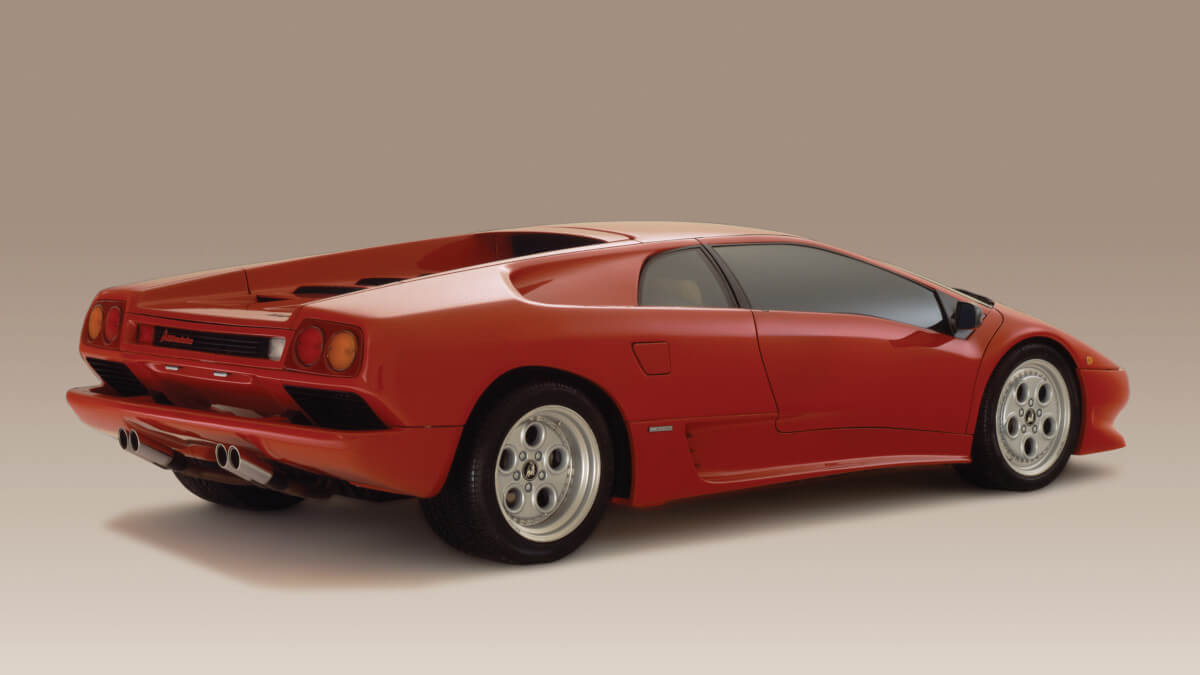



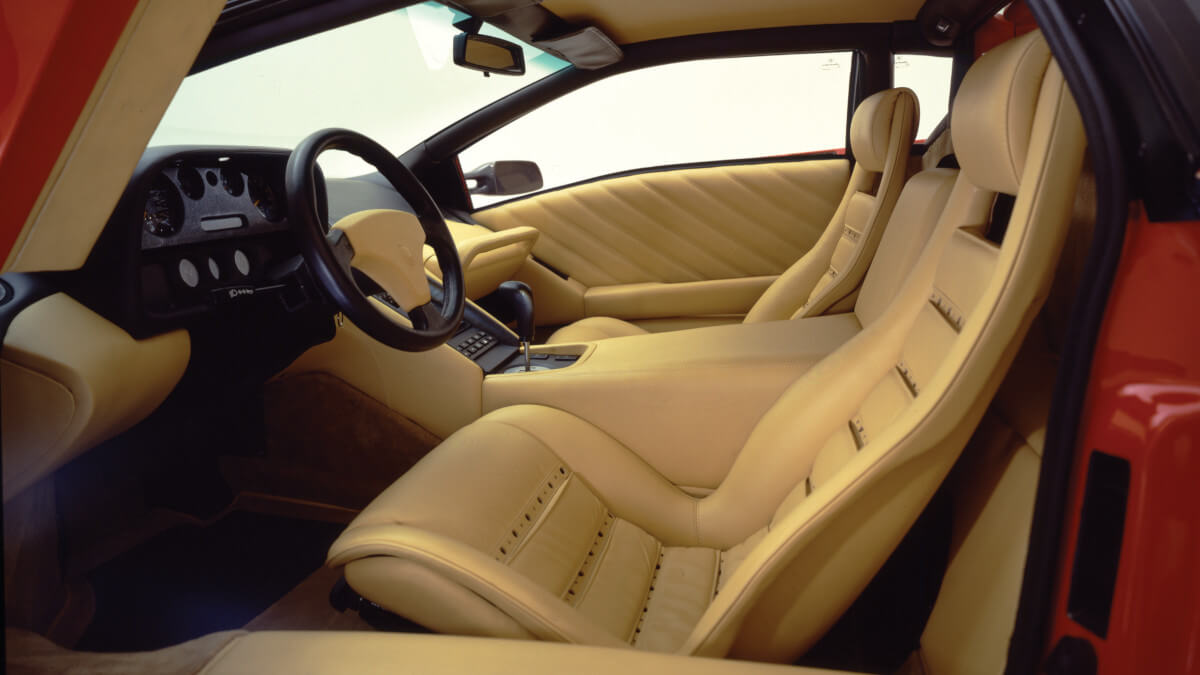







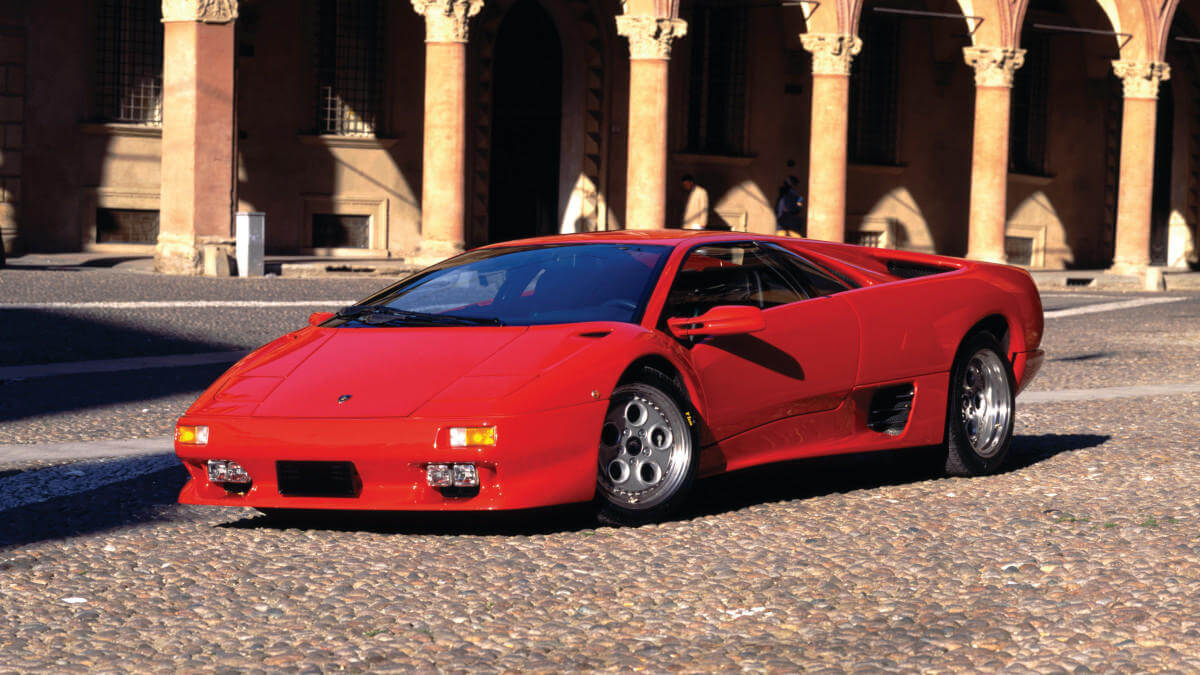



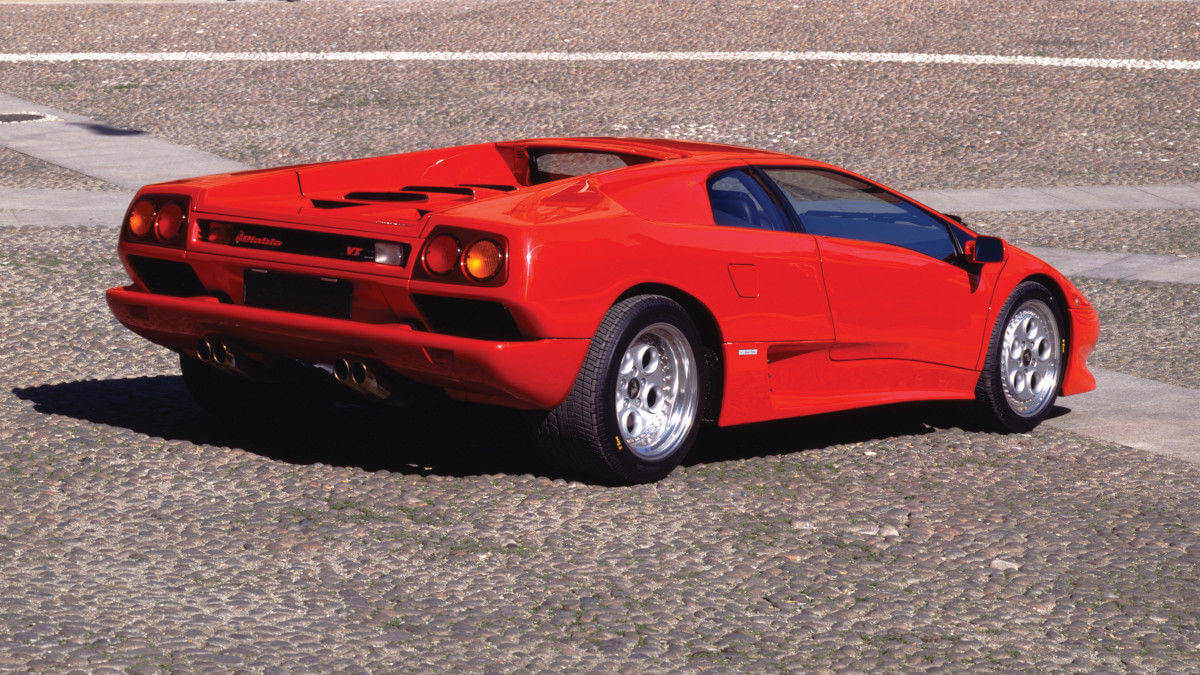



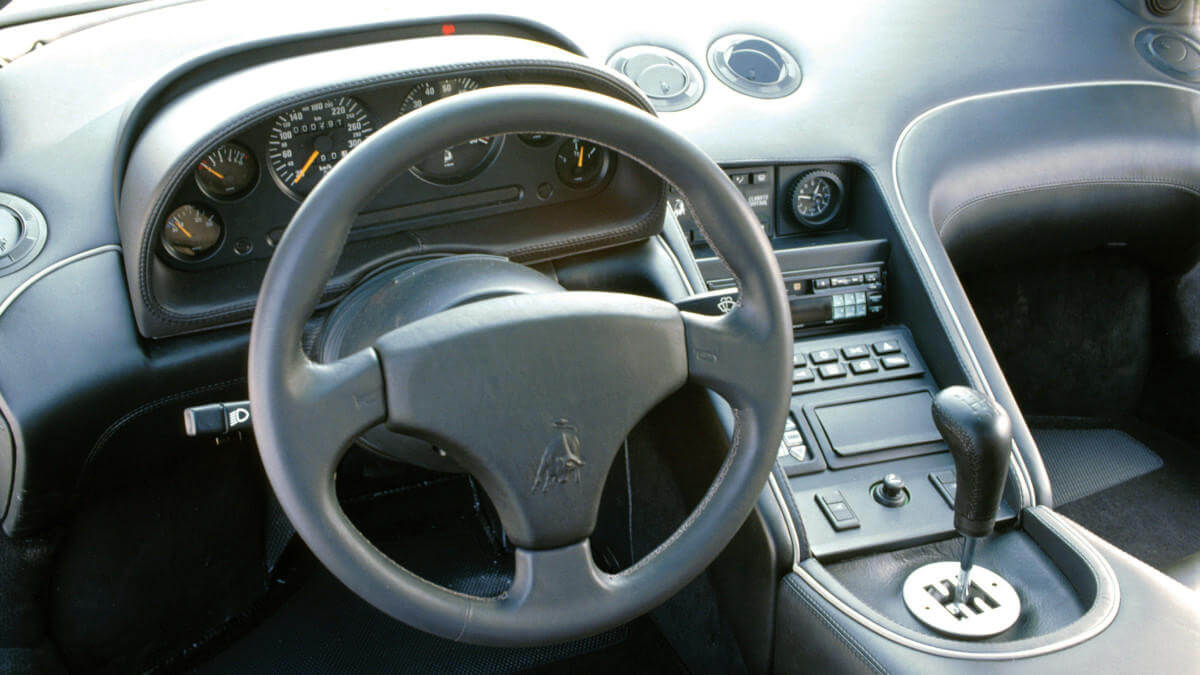



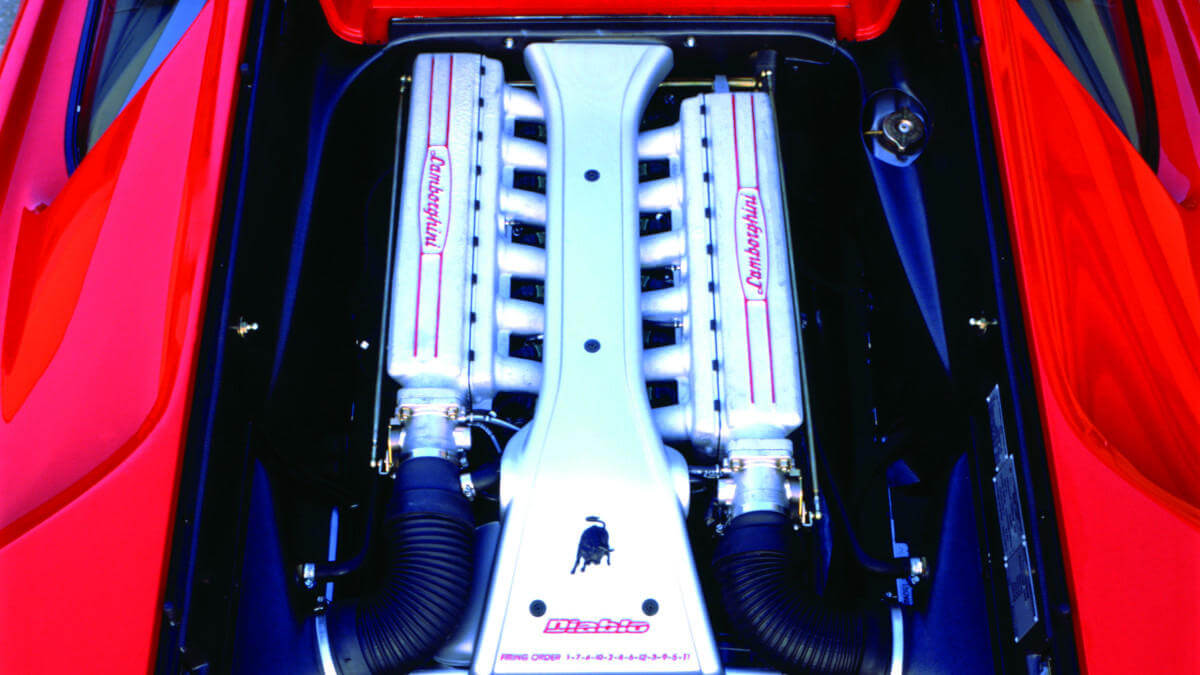



Design by Marcello Gandini
The development phase of the Diablo fell at a difficult time for Lamborghini. Various changes of ownership had damaged the brand’s reputation just as much as the sometimes poor assembly quality of the Countach. Under Patrick Mimran, work began on a successor model under the abbreviation P132. However, financial bottlenecks didn’t allow this vehicle to be developed ready for series production. In 1987 Mimran sold the company to the Chrysler Group. The latter originally wanted to push through with their own design for the new sports car, but ultimately fell back on drawings by Marcello Gandini. But as Gandini’s design sketches had been refused by Chrysler earlier, he already passed them on to Claudio Zampolli for the Cizeta Moroder V16T. For this reason, at first glance, the Diablo looks like one egg to another. The air resistance was significantly lower than in the previous model. However, the optional rear wing made it worse again.
Interior design from Detroit
Compared to the Countach, the Diablo got a tubular frame chassis again, but with a longer wheelbase. In addition, square tubes were used instead of round ones. Next to steel and aluminium, carbon fiber was used for the first time for the bodywork. While Chrysler preferred Gandini for the exterior, there was nobody stopping them from having the interior designed in Detroit. The curvy dashboard with a wide center tunnel reminds a little bit of the Dodge Viper RT/10 developed roughly at the same time. In contrast to today’s time, the Diablo was exclusively available with a manual five-speed gearbox, for which an open shift gate was installed. Some owners and car testers cursed about devilishly heavy gear changes through the hard clutch. The name of the supercar, however, came once again from a fighting bull that had fought a hard battle against the torrero ‘El Chicorro’ in Madrid on June 11, 1869.








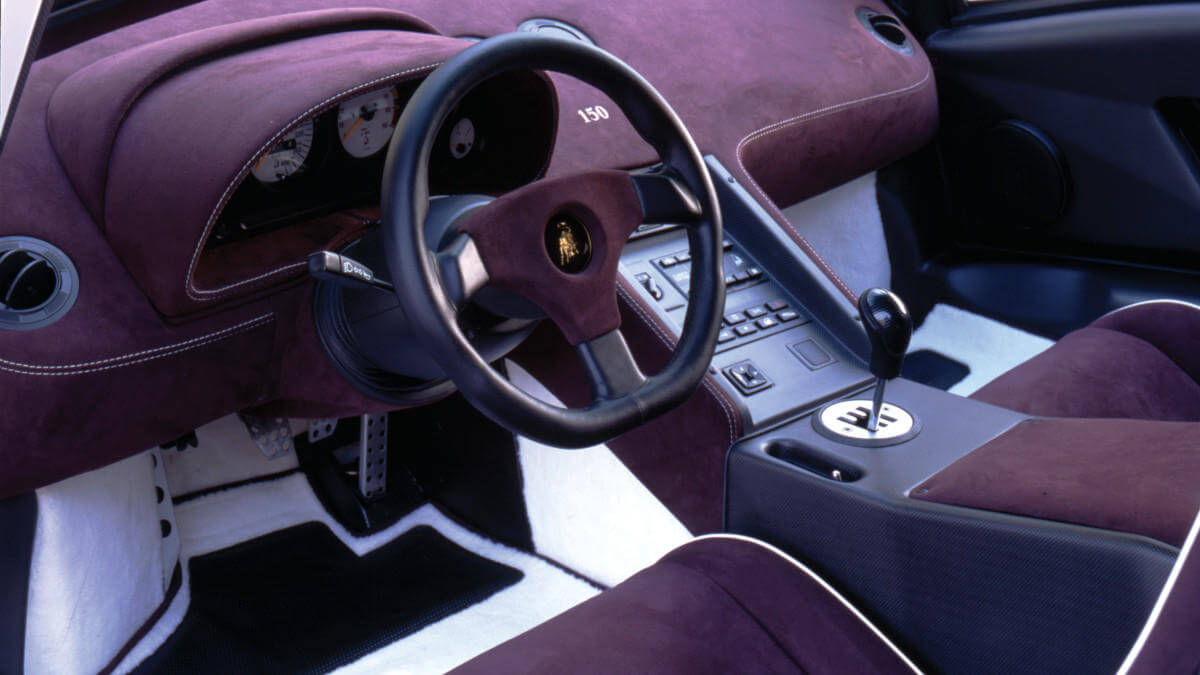







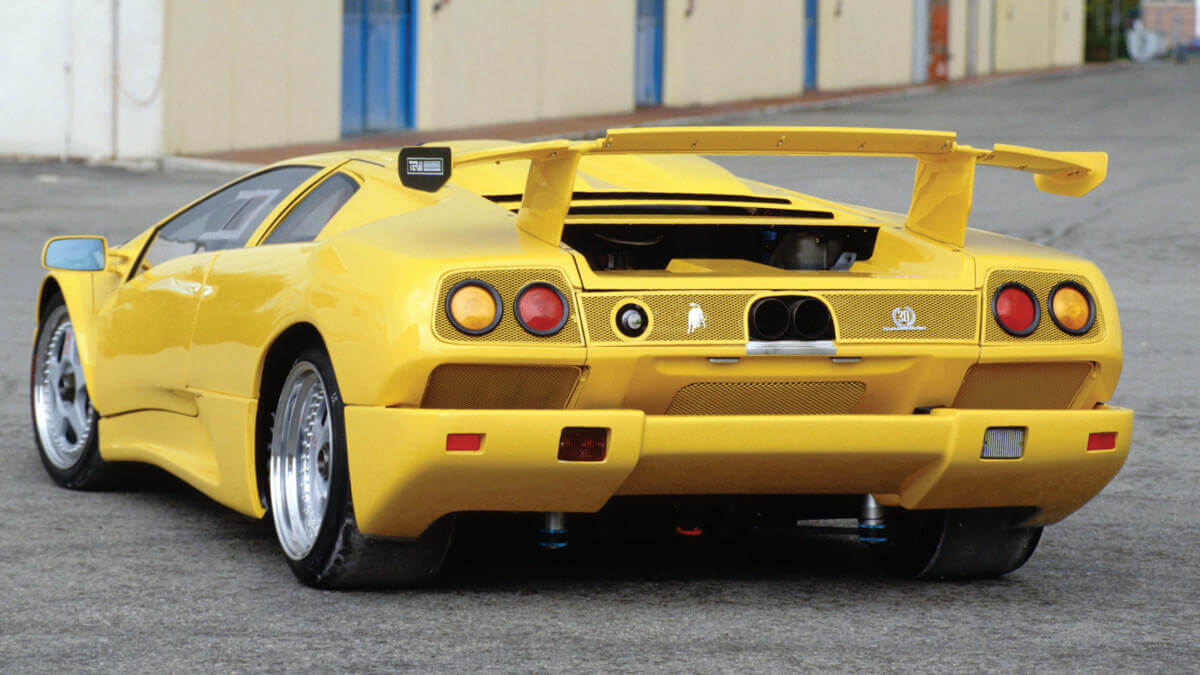











First four-wheel drive Lamborghini supercar
Three years after its launch, Lamborghini added the Diablo VT to its range. The acronym stood for ‘Visco Traction’. Instead of the company’s previous rear-wheel drive cars (except for the LM002), a permanent four-wheel drive system was introduced. With low grip, a viscous clutch distributed power to the front wheels. In addition, all Diablo models got a modified dashboard with better ventilation, power steering and an easier to use clutch. On the Diablo VT, Lamborghini also installed electronically adjustable Koni dampers with four pre-configurations. Although rumor had it that production of the rear-wheel drive version was to be discontinued at the end of 1994, it remained in the range until the end of 1998. In 1994, the ownership of the brand changed again. Chrysler sold Lamborghini to the MegaTech group from Indonesia.
SE30 as a special edition, Roadster as an addition
One year before this change of ownership, Lamborghini presented the Diablo SE30 to mark the company’s 30th anniversary. Originally this version was planned as a homologation vehicle for GT sports car racing. For this purpose, they developed the optionally available Jota kit, which provided additional power (596 instead of 525 hp) and two roof scoops. For the normal SE30 the side air intakes, the front bumper and the engine flap had already been modified. Next to that the car got lighter side windows with a much smaller section to open. In addition to the presentation color ‘Viola SE30’ (purple metallic) with blue Alcantara interior, other color combinations were available on request for the 150 vehicles. In December 1995 the Diablo VT Roadster with the normal 492 hp engine made its debut at the Bologna Motor Show. Prior to this, a Roadster Concept had been shown at the 1992 Geneva Motor Show. This was the first Lamborghini V12 supercar to be offered with open roof. The fixed hardtop over the heads of the passengers could be removed and then attached to the hood.
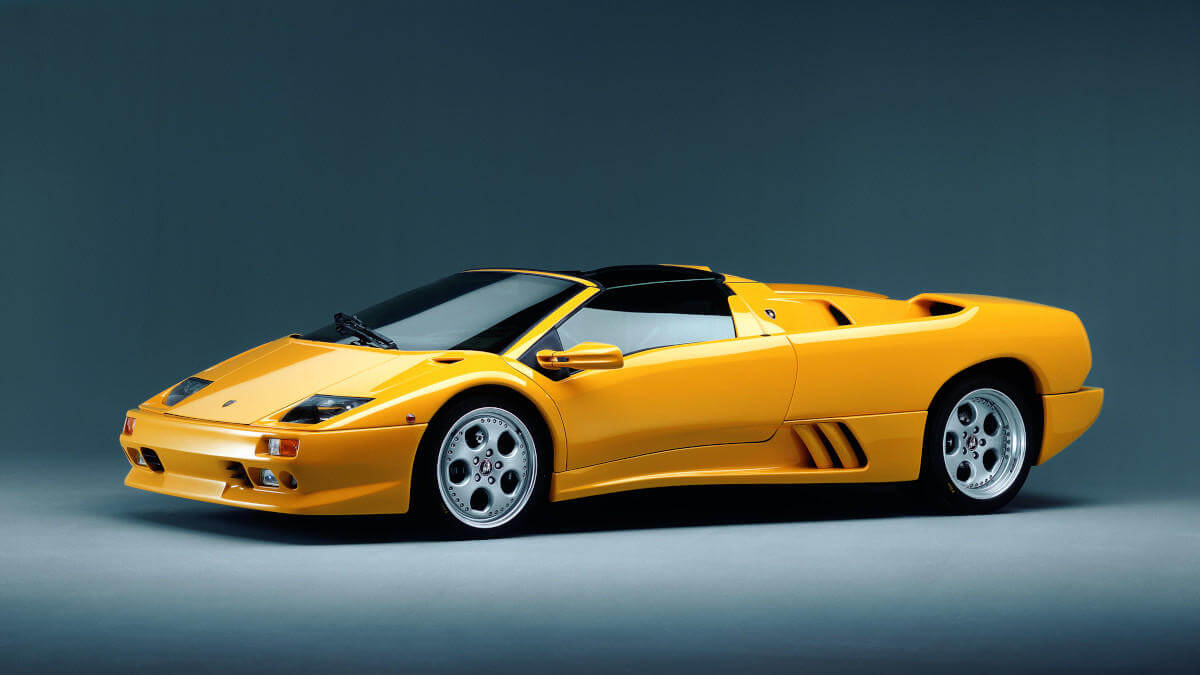



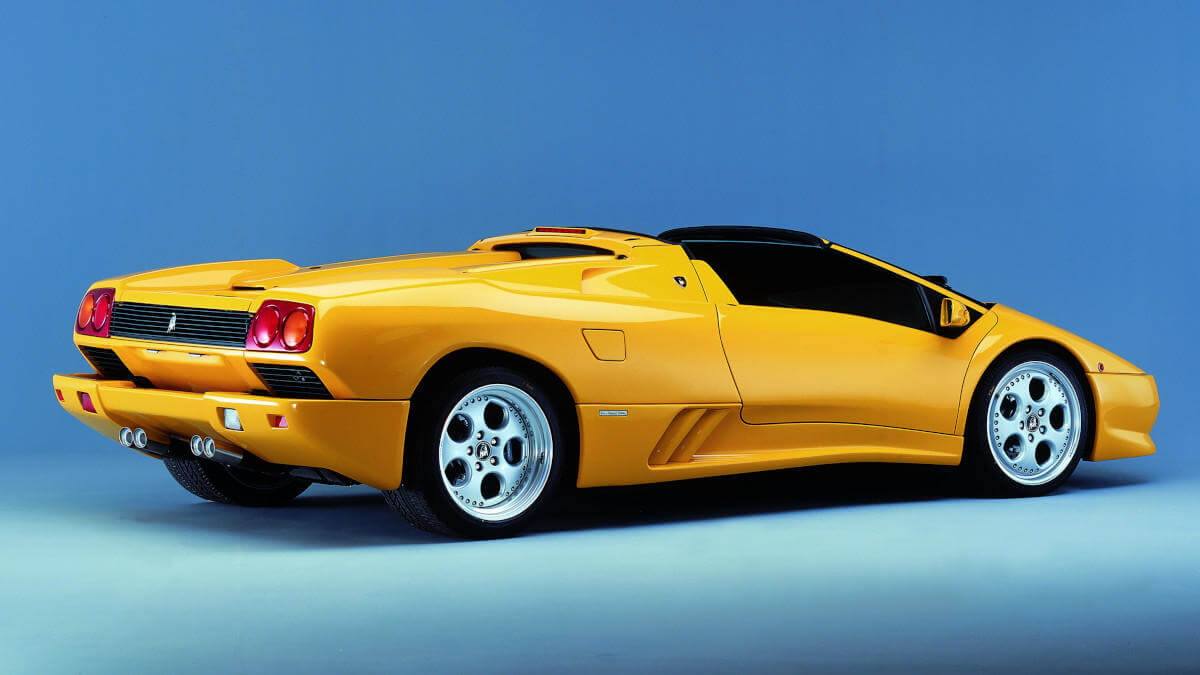



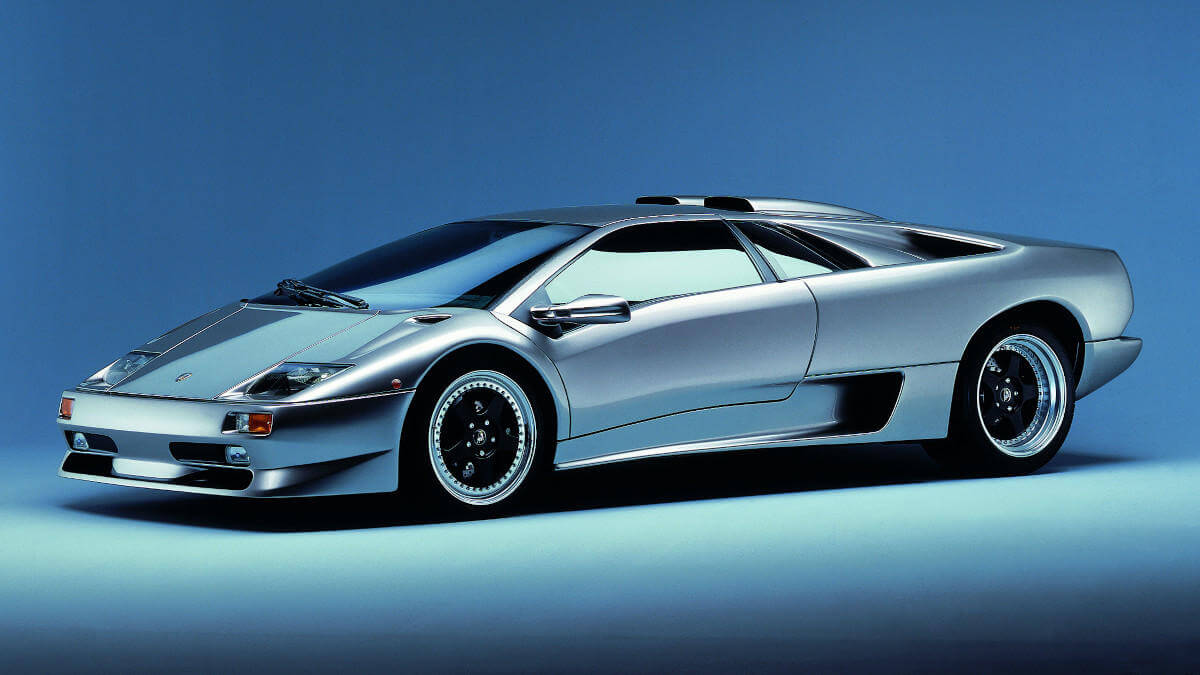



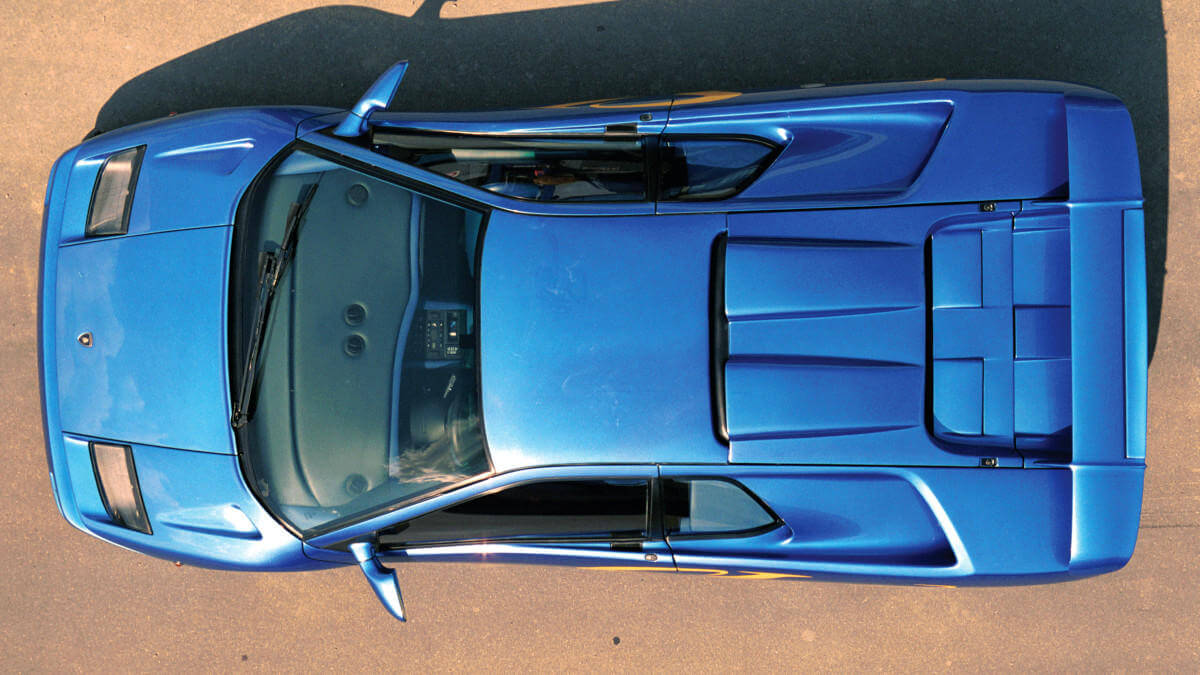



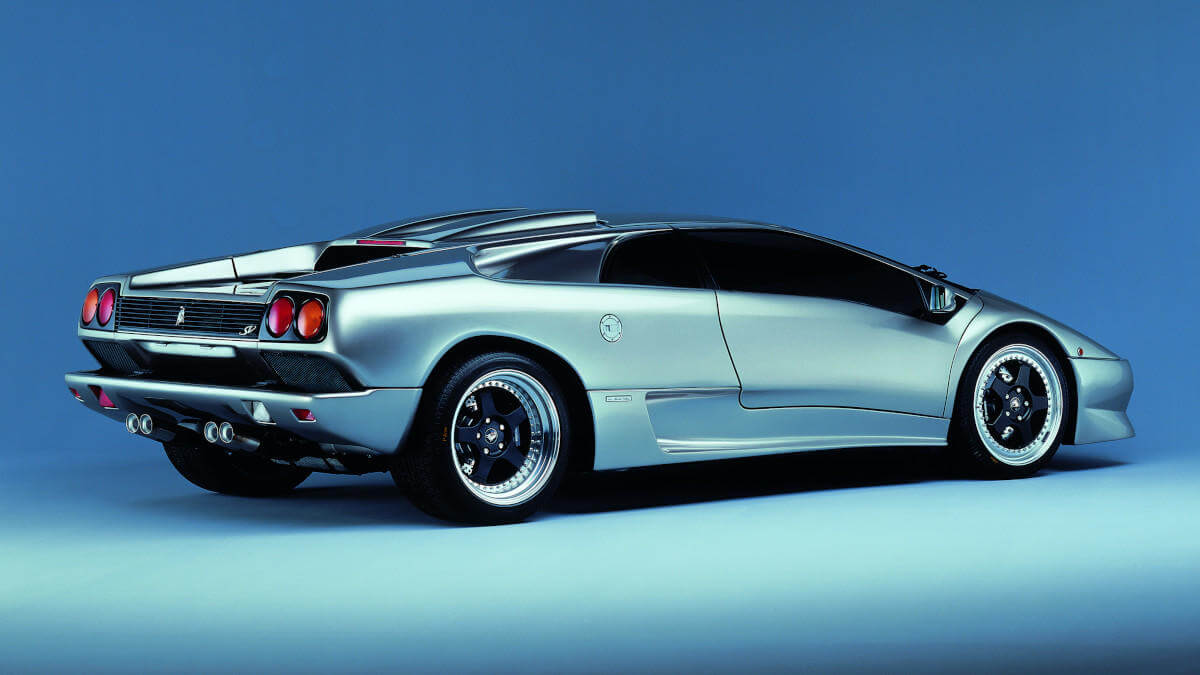



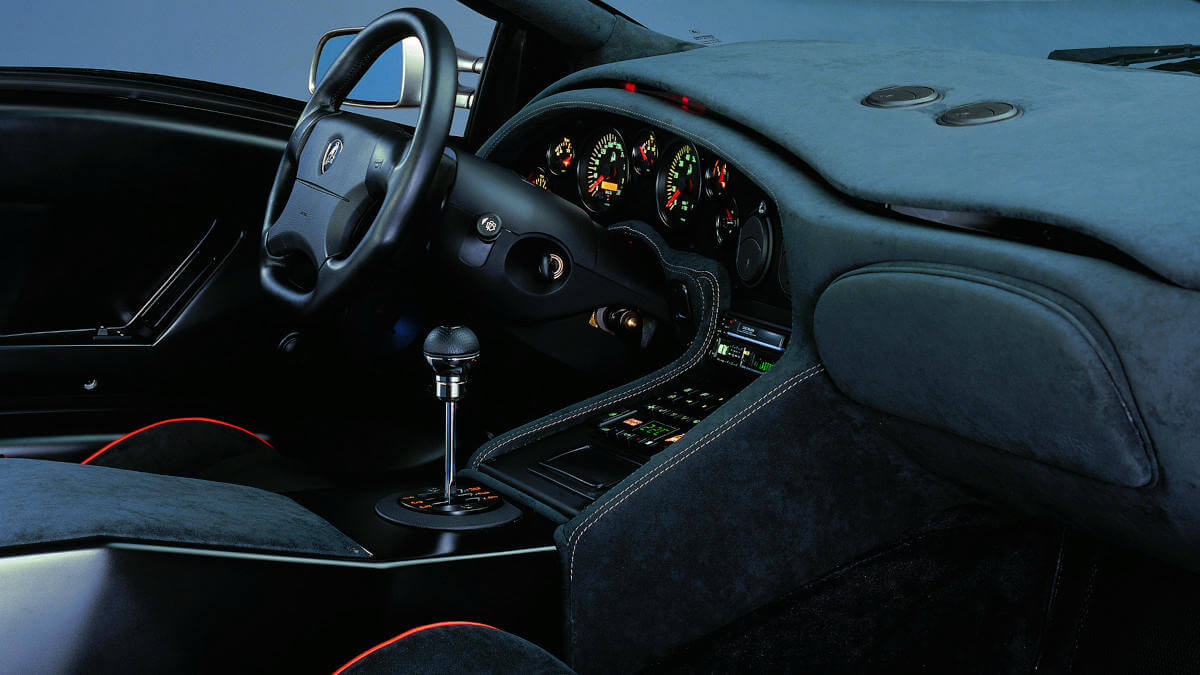



















Motorsport only in one-make trophy
While the SE30, contrary to previous plans, didn’t make it to motorsports, this topic continued to occupy the Lamborghini developers. Thus, from 1995 on, the Diablo SV with rear-wheel drive and a power increase to 375 kW/510 hp was created. In addition, the electrically adjustable chassis was not fitted to these cars. Instead there was a more powerful brake system and an adjustable rear wing. One year later, the racing version Diablo SV-R with larger spoilers, modified brakes and an interior adapted to motorsport appeared for a one-make trophy. In 1997 the unique Diablo Roadster R was built in the same style. Together with SAT (Signes Advanced Technology) in France, a GT1 racing version of the Diablo was created in 1996. However, there are only two examples in existence, one of which competed in the Japanese JGTC series. One year later, the Lamborghini racing department developed the Diablo GT2 with a lighter carbon body. Although it never raced, various findings were used for the following facelift.
Facelift with clear glass headlights
In March 1998, the Diablo SV Roadster also made its debut at the Geneva Motor Show. However, in the same year Lamborghini passed into the hands of the Volkswagen Group, which linked the brand to Audi. One of the first directives issued from Ingolstadt was to dispense with rear-wheel drive, which meant that only five Diablo SV Roadsters were built. Under German management, all Diablo offshoots were given an extensive facelift in 1999. This is optically recognizable at first sight by the clear glass headlights, bought from Nissan. Inside a completely new dashboard was fitted. Diablo SV (still with rear-wheel drive), Diablo VT and Diablo VT Roadster now had 390 kW/530 hp.




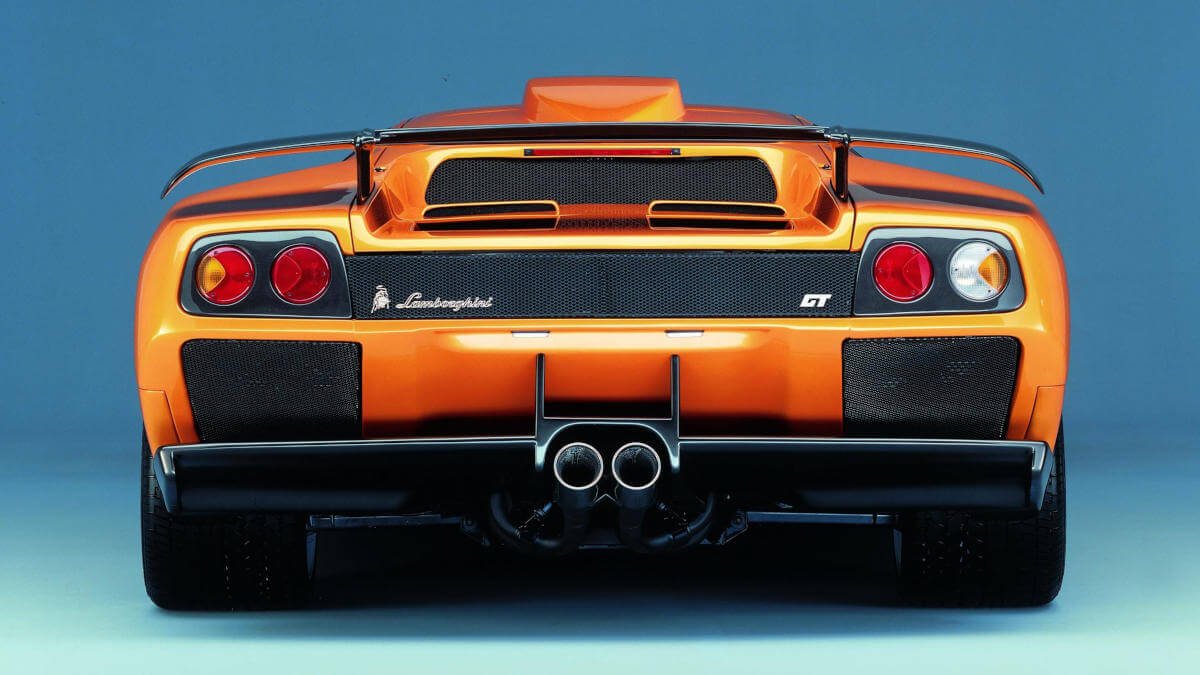















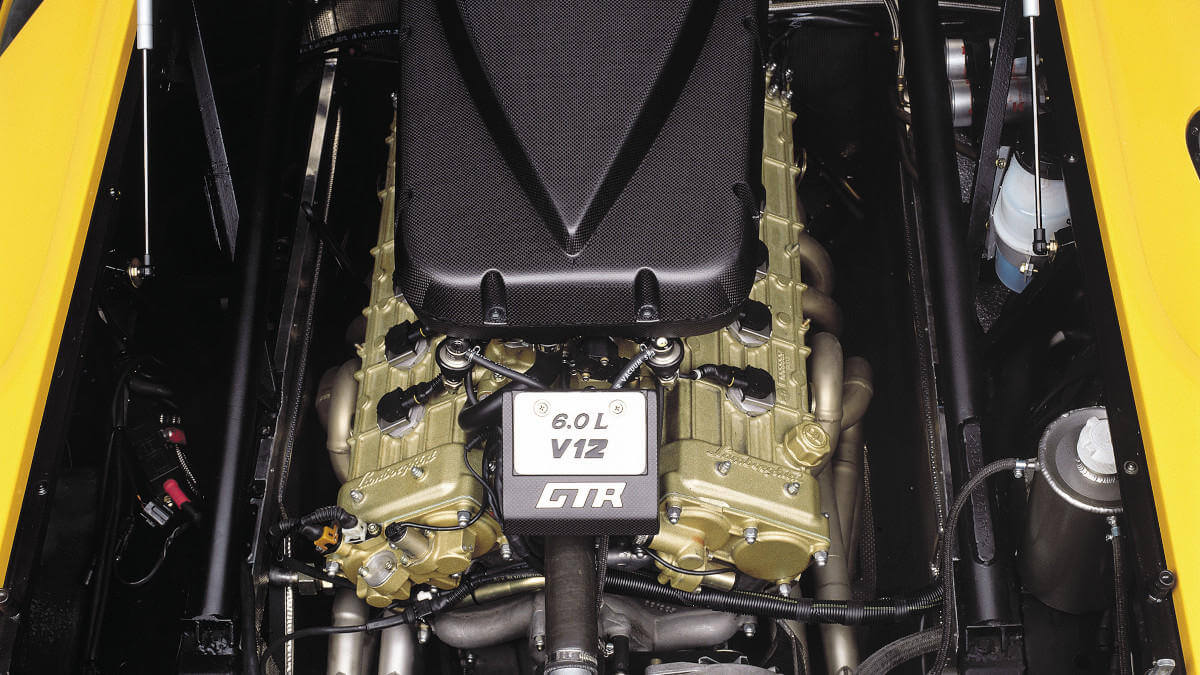







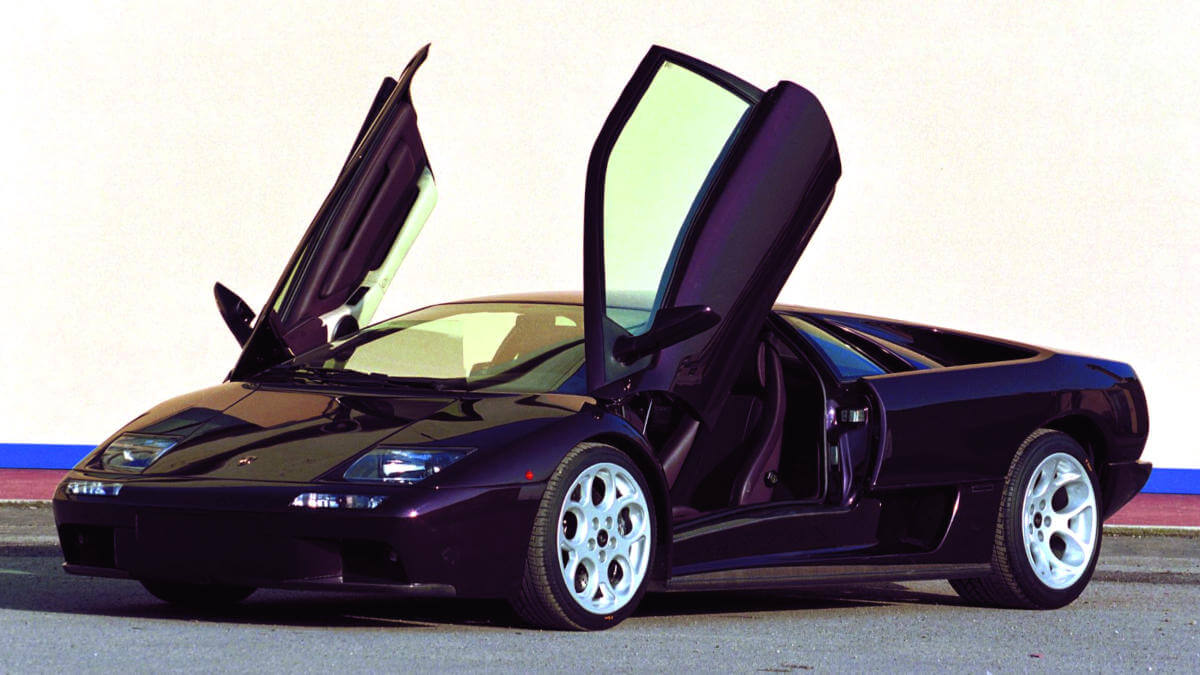







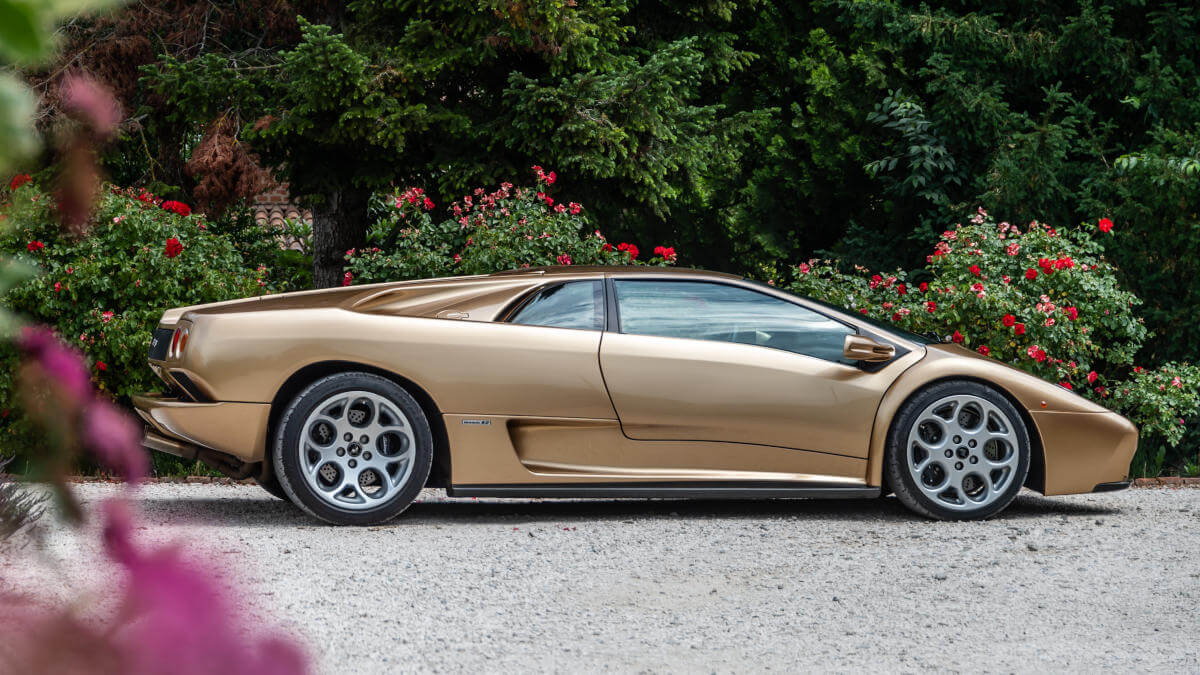



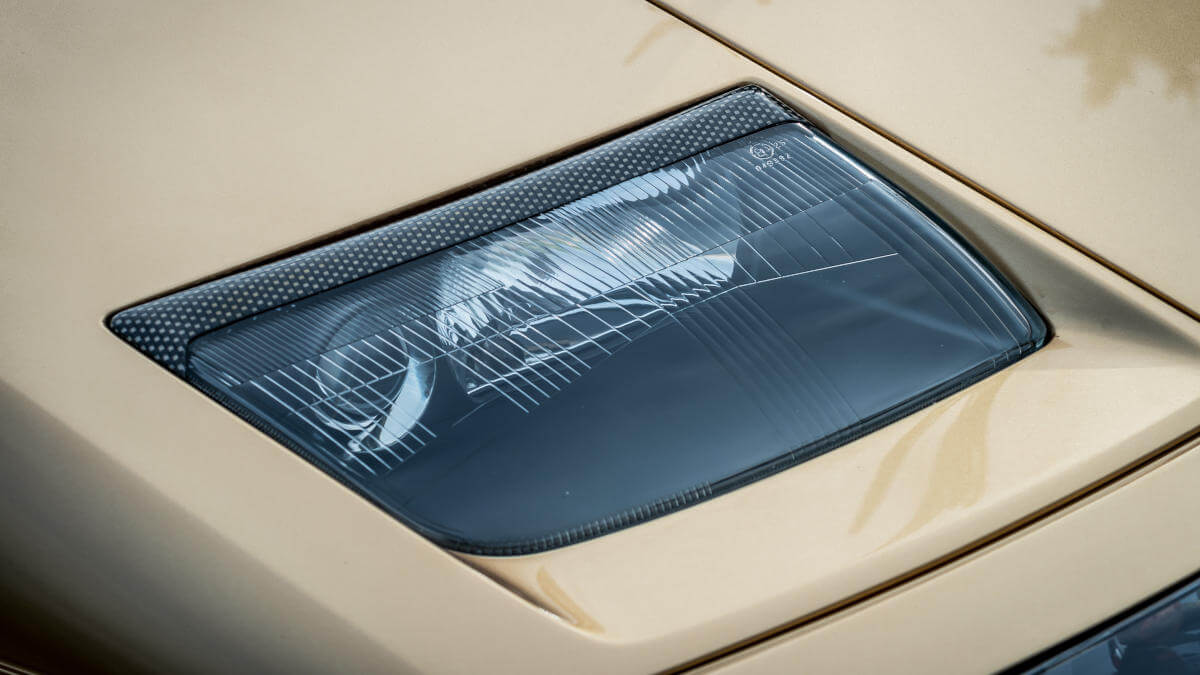



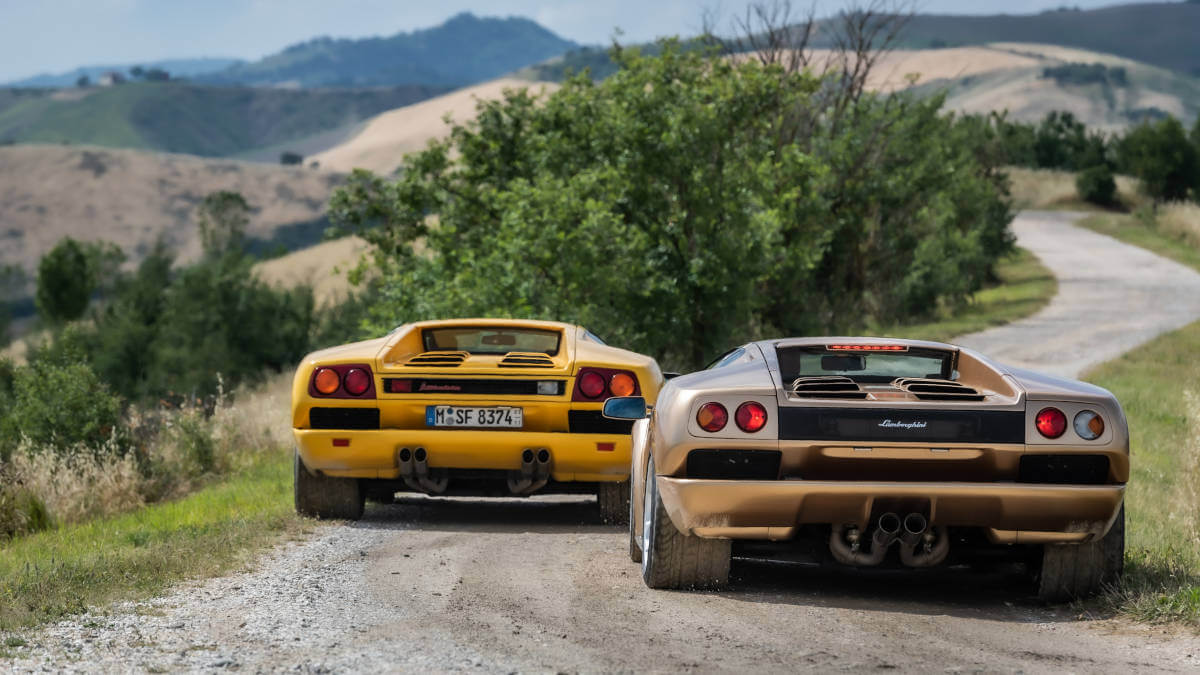



Limited sports versions
In September 1999, Lamborghini presented the Diablo GT, limited to just 80 copies, at the IAA (Frankfurt Motor Show). An air outlet was integrated into the front hood, an air scoop was mounted on the roof, an adjustable wing on the rear and further down a bumper that was converted into a diffuser. In addition, the car used a version of the V12 engine with 423 kW/575 hp that had been increased to six liters displacement. This was also the basis for around 40 examples of the Diablo GTR racing version with 438 kW/596 hp. Private race drivers used this car in the Lamborghini Diablo Supertrophy.
Final after 11 years of production
The final edition of the Diablo, the VT 6.0, was released in 2000. At the same time, the Roadster was dropped from the range. Actually, the successor model should have been available at that time, but the development work had once again been delayed by the change of ownership from MegaTech to Audi. So the Germans had rejected the planned vehicle designed by Zagato outright and started from scratch. As a result, the Murciélago, this time designed by Luc Donckerwolke, appeared at the end of 2001. In the months before, Diablo fans were able to say goodbye with the final special edition model Diablo 6.0 SE. It was available 20 times in the golden color ‘Oro Elios’ and another 20 times in ‘Marrone Eklipsis’ (brown). A total of 2,903 Diablos were produced, surpassing even the Countach, which was produced over a longer period of time.
Images: Lamborghini




